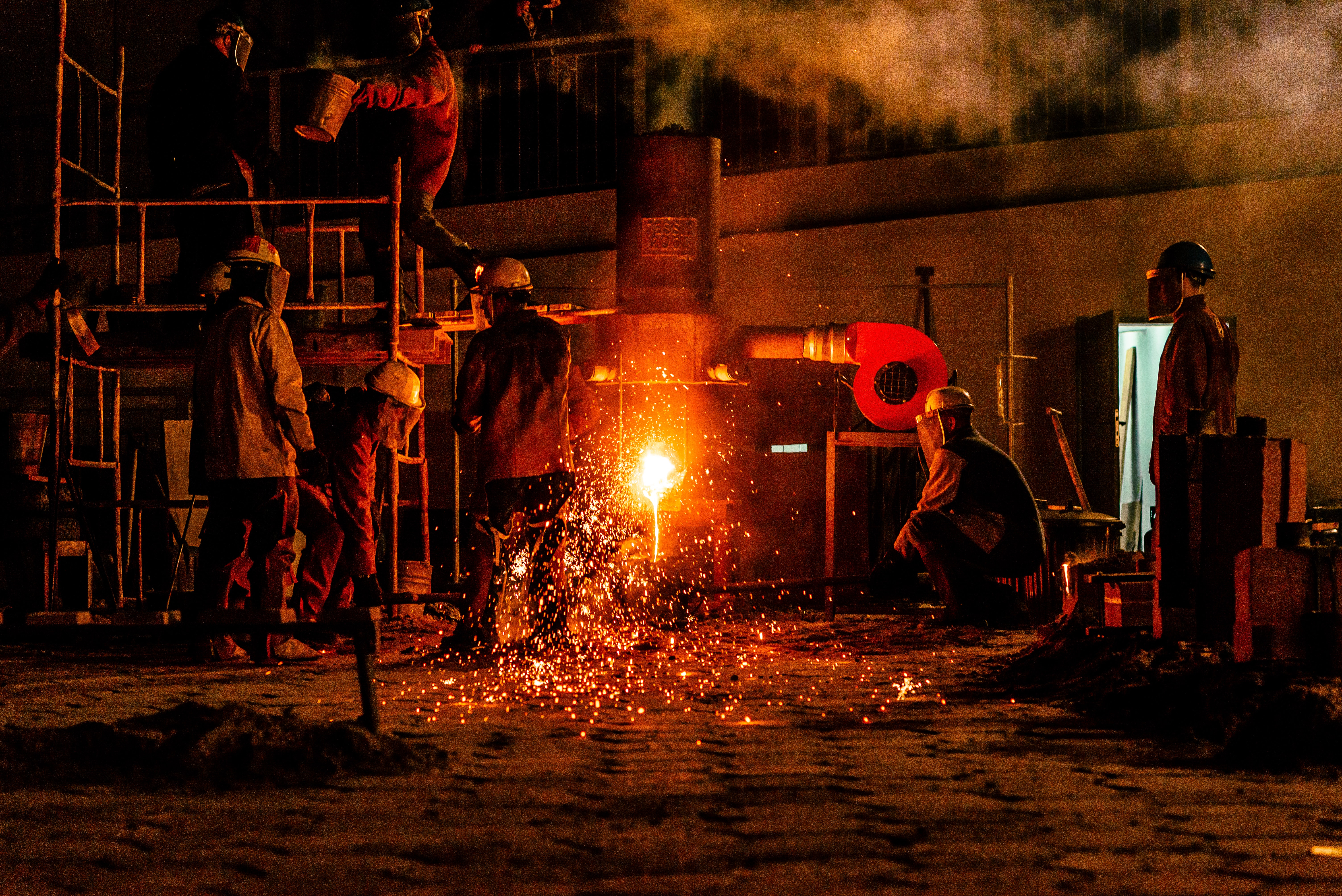Hymns of the World-Forger
As the forge-anvils ring, As the women's looms sing, As the harvesters comb up the fields; As the woodworkers chop At the forresters' crop Do we spring from the World-Forger's yields...Hymns of the World-Forger is a large collection of hymns which, in combination with Universal Artifice, help to establish the monotheistic mythos of the Forgist faith.
Document Structure
Clauses
The Hymns of the World-Forger are a collection of around sixty songs, with some being considered apocryphal based on suspicions that they might be more recent inventions. The actual authors of each hymn are unknown, having all been cribbed from existing 7th millenia religious songs dedicated to the then-popular god of fire, death, and destruction. In most cases, the original songs which inspired the hymns are completely lost to history, making the Hymns the only work in which they are directly refferenced. While many of the hymns in the compilation show clear influences from early (Classical Verdial) Forgist thought, others are notably bereft of imagery related to other important tenets of that faith (i.e. the idea that the world is some sort of grand-scale illusion). One aspect that they all share, however, is that all hymns in the compilation seek to appease a single, masculine higher power with a strong connection to the fires of creation, expressing either a respect for the creative works he has enabled or a fear of his destructive wrath.
Historical Details
Background
The Hymns of the World-Forger borrow elements from older occult beliefs relating to a god of fire and death in the early 6000's AX. This older deity, whose name is now lost to history, was worshipped for similar reasons to that of the House of the Unexpected: by propitiating the god of fire, whose power was incredibly destructive to verdial lives and lands, these early worshippers hoped to avert his ire rather than calling upon his power for daily life. As Vale Verdial metallurgy improved, the dire connotations of an unknowable spirit behind fire became softened by the knowledge that fire could be a force of creation in addition to a force of destruction. Other primitive deities relating to the harvest, fertility, and certain poorly-understood forces of nature (i.e. circumvection) were also worshipped during this time period, though relative dearth of religious codification - in relation to the tuneful odes sung to the god of fire - saw their followerships declining with each successive generation.
Over time, the doctrines associated with the old deity became completely forgotten, leaving only Forgism in their wake. More accessible and with a more clear-cut religious cannon - including the Hymns - Forgism consigned most other remaining Vale Verdial religions to slow extinction.
It is unknown if Universal Artifice was published in response to this system of beliefs or if it was developed independently, but what is known is that Universal Artifice fundamentally changed the way this ancient god of fire and death was seen by Vale Verdial society. Fire's unpredictability and propensity to spread, clearing large swathes of land in a cycle of forest fires which would spread new life in its wake, dovetailed well with the nascent Forgist belief in a smith-like Creator hewing the world from a bolus of unseen "worldstuff". Many of the old practices related to the deity - including the practice of singing prayers around lit fires - were overlaid onto the new practices and beliefs promulgated by Universal Artifice.
Legacy
The Hymns of the World-Forger did for the Vale Verdial musical culture what Universal Artifice did for its language. The Hymns feature the very first instance of a written system of musical notation in The Verdial Arc, a system which has been adapted over time to create the notation used by Verdial musicians today.This later circumstance has led to these hymns becoming closely associated with labor issues activism within the Vale, particularly in relation to the sort of blue-collar work that requires such synchrony. In a twist of irony, the use of other hymns to synchronize marching among Vale military and paramilitary organizations has created an competing association between the Hymns and military culture, especially combat engineering corps.
Translations of the Hymns into Iuxat, coupled with adaptations of the notation for use with armos nonengu accompaniment, are popular among Rostran adherents Knappism.
Knappists often associate these attendants with the spiritual life of the Esotericist 'great cycle', suggesting that they might be as-of-yet-unborn entities dating back to The Curved Time. In contrast, most Forgists believe these entities were actually early verdials (before the full descent of the verdial peoples from human stock) tasked with serving the Creator through the establishment of tool-using civilization and the proselytism of the Forgist faith.
The Hymns, along with Universal Artifice, are vital components of the modern Forgist religious canon. Believers often sing or hum the strains of various hymns found within as they work on creative projects, hoping to tap into the primal energy of creation embodied by the Creator (called the World-Forger in the Hymns). Rhythmic hymns from the compilation are sometimes sung on worksites not so much out of devotion but as a way of synchronizing actions across (i.e. hammer blows) across a group of workers.
The Rostran aural palette is somewhat different from the Vale Verdial one, owing to the fact that Rostrans live in different conditions with regards to humidity and altitude (especially among High Rostrans which changes the way sound propagates; the musical notation found in the Iuxat version of the Hymns is shifted to reflect these differences.
The Hymns make reference to the 'attendants' of the higher power to which the songs found within are dedicated, though these refferences are nebulous enough that depictions of these servitor beings vary greatly in popular culture.
Type
Manuscript, Musical
Medium
Paper
Location
Signatories (Organizations)







I love that the hymns have lots of different uses, especially the rhythmic ones and their use in synchronising work. I also really like that they come in part from a much older god who has been lost to time. That's an interesting addition.